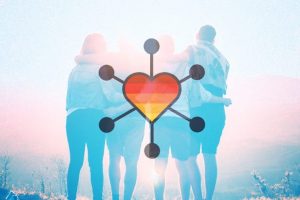
Competency seven involves assessment with individuals, groups, organizations, and communities. It is vital for social workers to understand client needs by gathering and assessing multidimensional information concerning both the client and the situation. The assessment process allows the worker to learn genuine strengths, concerns, weaknesses, and opportunities involved with individuals and systems. It will also provide a foundation for appropriate treatment planning. I intend to use assessments at the micro, mezzo, and macro levels to employ relevant social work knowledge and theory directly related to the gathered data. I will formulate and implement comprehensive assessments with various diagnostic systems and continuously collaborate with other professionals as necessary.
7.1: Formulate comprehensive assessments using a variety of diagnostic classification systems.
Course Evidence: I learned how to utilize the SAFER-R Model to assess individuals in times of crisis. I practiced this assessment model with a pseudo client numerous times during my Trauma and Emergency Management: Emphasis Foundation course. The SAFER-R model focuses on stabilization, acknowledgment, facilitation of understanding, encouragement, recovery, and referral for clients dealing with crisis or trauma. Suicidal assessment may be involved when using this stabilization model.
Field Evidence: I completed many Diagnostic Interview Intakes during my practicum. As evidenced in my Journal Entry, I also became familiar with using various assessment scales, including ACES, GAD, PHQ-9, and CSSRS. Using evidence-based assessment scales helped me identify and understand particular client symptoms and issues related to DSM 5 diagnoses.
Additional Evidence: I completed training on DSM 5 Differential Diagnoses that helped me understand how to use a symptoms-based approach to diagnostic classifications. I also utilized a DSM 5 Diagnoses Quick Reference Sheet to help while completing diagnostic intake assessments. This reference sheet is more of a simple starting point when identifying presenting symptoms. I found it easier to refer to the sheet to determine which diagnoses to continue researching in the DSM 5 manual. The reference sheet was also distributed to other Omni Visions practitioners.
7.2: Design and implement organizational and community assessments.
Course Evidence: During my Advanced Administration: Program Development class, a group project consisted of creating a Community Needs Assessment and Program Proposal. The group used statistical research from the Chattanooga Open Data Portal that showed racial disproportions with Chattanooga arrests, citations, and use of force, as well as Chattanooga Police Department Internal Affairs Reports to form the foundation of community policing needs. The group took this foundation to form the Community Interview Survey focused on views of police and the sense of safety in the Chattanooga area to gather further community assessment.
Field Evidence: I met with Omni Visions Team Leaders and upper management to introduce the idea of using the Professional Quality of Life Scale (ProQOL). ProQOL is an evidence-based assessment that measures compassion satisfaction, vicarious trauma, and burnout in employees. I proposed that Team Leaders start having employees complete the assessment quarterly as preventive measures of vicarious trauma or to treat vicarious trauma before experiencing burnout. I believe this will help increase employee satisfaction and retention rates at Omni Visions since employees are at high risk of compassion fatigue, vicarious trauma, and burnout.
Additional Evidence: I completed a SWOT Analysis Discussion Post in my Advanced Administration: Program Development class. I analyzed how the identified strengths, weaknesses, opportunities, and threats could help the newly established Chattanooga Rise Up program in preparing for more successful programming.